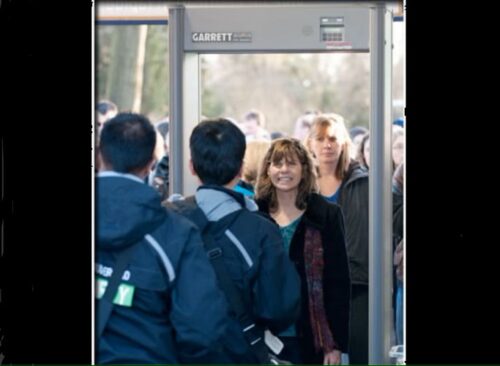
8.9.23 – Syracuse.com – by Melissa Newcomb | mnewcomb@syracuse.com
The Syracuse School District is working on several new security measures including panic buttons and placing armed officers in K-8 and middle schools to respond to serious safety threats.
This summer, the Syracuse school board and common council approved an agreement between the school district and the Syracuse police department that will put up to 20 retired officers in schools.
Syracuse police officers, known as school resource officers, are already in the high schools. The retired officers will be called school community safety agents.
The primary duty of both types of officers will be to protect students from any threat that could enter the school grounds, like a person wielding a weapon.
The armed officers will patrol the school and watch students during arrival and dismissal. The program will cost the district $1.23 million.
Officers will not get involved with most student disturbances, like fist fights. They also will not be involved in disciplinary actions.
They will only get involved with student matters if the threat is severe, like a weapon is present, and other measures have been exhausted.
School sentries, who are unarmed security guards, are responsible for curbing any student fist fights. There are 92 sentries throughout the district. High schools have the most.
Sentries have verbal de-escalation and physical restraint training. They are taught to try to reduce the intensity of an altercation before using force to restrain the participants. They also monitor entrances and check bags.
“Students are going to make errors. The teen brain is still developing,” said Director of Public Safety Thomas Ristoff. “And a lot of the time it’s an error in judgment and the idea is to reconcile that error in judgment and keep them enrolled in school.”
The school community safety agents – the armed retired officers – will not be stationed in elementary schools due to funding. But Ristoff plans to have them float among the 13 elementary schools when extra support is needed.
Ristoff is optimistic that the program will begin for the upcoming 2023-24 school year, though it may be implemented in phases depending how quickly retired officers and sentries can be hired.
The district is also hoping to install panic buttons that alert school occupants of a lock down in an emergency through the loudspeaker and simultaneously alerts the police for help.
The panic buttons would be mostly paid for by a federal grant. The district has applied for $500,000 from the School Prevention Program. It hopes to receive a decision by the end of September.
The panic buttons would be installed in elementary schools first. They are considered the “most vulnerable population that needs the most support,” said Ristoff.
“Whereas middle school kids or high school kids, you can pretty much train them and they know what to do, you know, they’re gonna think on their feet,” said Ristoff.
The buttons would likely be installed in the main office where the principal and other office staff would have access to it. The button can also be triggered remotely if personnel are away from the office when an emergency occurs.
Ristoff says the purpose of the panic buttons is to make dealing with emergency situations as efficient as possible. By automating the announcement and signaling for help, the buttons allow staff to focus on immediately making sure students are safe.
“In a crisis, seconds could count,” said Ristoff.
The district is also improving how they verify that existing safety measures are working.
At a school board meeting this month, board member Twiggy Billue said that she tested a door alarm at a high school. If opened, the door alarm was supposed to sound. But when she opened it, it didn’t.
Ristoff said that he investigated in the high schools and found that some of the battery-powered alarms needed to be changed. There is now a system in place for the alarms to be consistently checked.
In another partnership with the police department, district staff including principals, guidance counselors, psychologists, nurses, and sentries received training on the best ways to get help that is appropriate for specific kinds of emergencies.
The goal is to equip staff with knowledge to make a good decision on who to call, especially if it is a mental health crisis. Ristoff said calling 911 is considered the default but sometimes there are more appropriate resources available.
